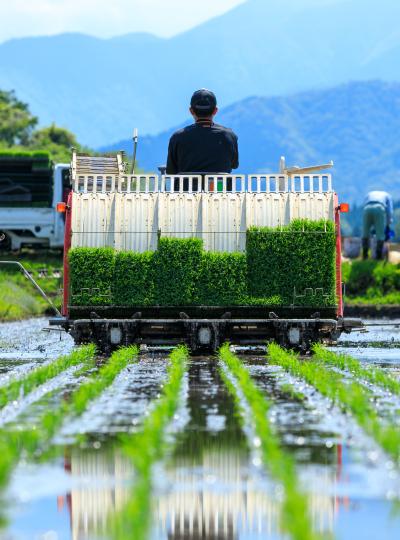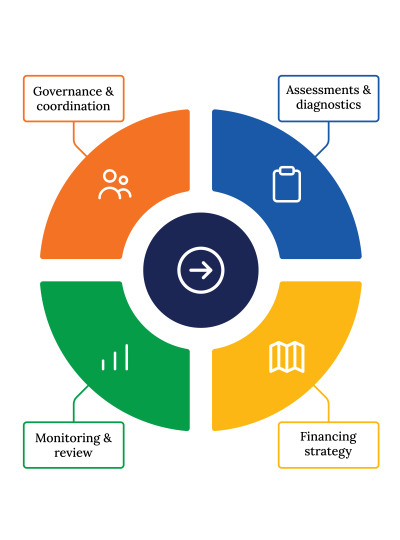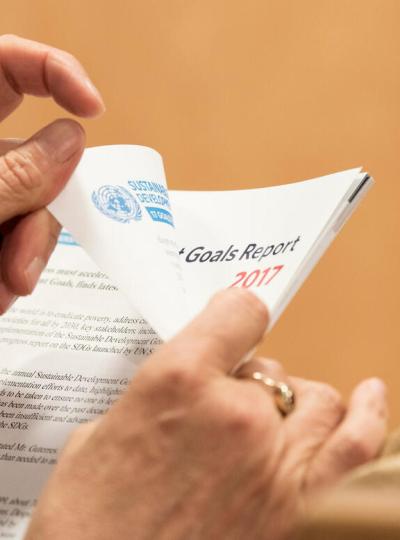Tourism Technology
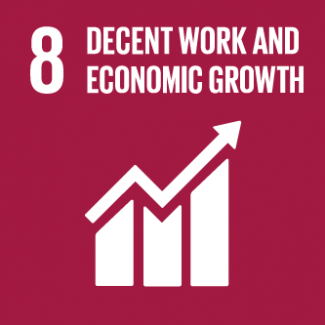
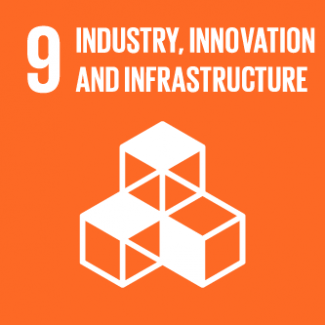
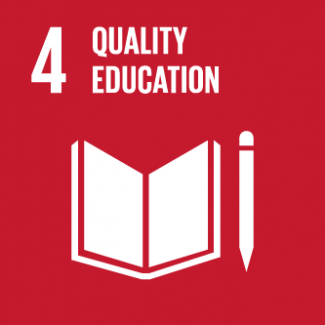
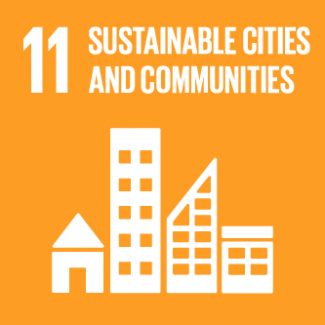
Business Model Description
The business model for tourism technology focuses on integrating digital innovations into the tourism sector to enhance customer experiences, streamline operations, and improve marketing strategies. This includes utilizing mobile applications, virtual reality experiences, and data analytics to create personalized travel experiences and optimize service delivery.
Expected Impact
By leveraging digital tools, Jamaica can attract a broader audience while providing innovative solutions
How is this information gathered?
Investment opportunities with potential to contribute to sustainable development are based on country-level SDG Investor Maps.
Disclaimer
UNDP, the Private Finance for the SDGs, and their affiliates (collectively “UNDP”) do not seek or solicit investment for programmes, projects, or opportunities described on this site (collectively “Programmes”) or any other Programmes, and nothing on this page should constitute a solicitation for investment. The actors listed on this site are not partners of UNDP, and their inclusion should not be construed as an endorsement or recommendation by UNDP for any relationship or investment.
The descriptions on this page are provided for informational purposes only. Only companies and enterprises that appear under the case study tab have been validated and vetted through UNDP programmes such as the Growth Stage Impact Ventures (GSIV), Business Call to Action (BCtA), or through other UN agencies. Even then, under no circumstances should their appearance on this website be construed as an endorsement for any relationship or investment. UNDP assumes no liability for investment losses directly or indirectly resulting from recommendations made, implied, or inferred by its research. Likewise, UNDP assumes no claim to investment gains directly or indirectly resulting from trading profits, investment management, or advisory fees obtained by following investment recommendations made, implied, or inferred by its research.
Investment involves risk, and all investments should be made with the supervision of a professional investment manager or advisor. The materials on the website are not an offer to sell or a solicitation of an offer to buy any investment, security, or commodity, nor shall any security be offered or sold to any person, in any jurisdiction in which such offer would be unlawful under the securities laws of such jurisdiction.
Country & Regions
Sector Classification
Services
The Services sector is a cornerstone of Jamaica's economy, contributing approximately 68% of GDP and employing a significant portion of the population. Its relevance stems from its role in driving economic diversification, supporting tourism, and expanding global digital services. Policy priorities focus on enhancing competitiveness through digital transformation,
Policy priority
Vision 2030 prioritizes economic diversification, digital transformation, and improving ease of doing business to enhance competitiveness
The sector supports community development through job creation, particularly in tourism and BPO. However, income inequality persists due to uneven distribution of benefits.
Investment opportunities introduction
Development of tourism infrastructure and technology-driven solutions.
Key bottlenecks introduction
Lack of Finance, Skilled labor force (Skills, Training & Education), Industry Support
Hospitality and Recreation
Development need
The Hospitality and Recreation subsector is central to Jamaica’s economy, given its significant contribution to GDP, employment, and foreign exchange earnings. The development need arises from increasing demand for modernized infrastructure, enhanced visitor experiences, and sustainable practices to maintain competitiveness.
Policy priority
Policy priorities include diversifying tourism products, investing in human capital, and leveraging technology to enhance service delivery.
Investment opportunities introduction
Considering the forgoing analysis and the national goals, two key Investment Opportunity Areas (IOAs) have emerged within Jamaica's tourism sector. These areas not only present significant investment opportunities but also enhance the resilience of the tourism sector while promoting sustainable practices.
Key bottlenecks introduction
Lack of Finance, Skilled labor force (Skills, Training & Education), Industry Support
Hotels and Lodging
Pipeline Opportunity
Tourism Technology
The business model for tourism technology focuses on integrating digital innovations into the tourism sector to enhance customer experiences, streamline operations, and improve marketing strategies. This includes utilizing mobile applications, virtual reality experiences, and data analytics to create personalized travel experiences and optimize service delivery.
Business Case
Market Size and Environment
> USD 1 billion
4.3 Million Visitors Annually
Economic Contribution: Tourism generates over $4 billion annually, contributing approximately 30% of Jamaica’s GDP. Integrating technology can optimize revenue streams through data-driven marketing and personalized services.
Investment in Tourism: Significant investments in tourism, as highlighted by the Minister of Tourism, Hon. Edmund Bartlett, include expansion by existing hotel companies and new investors, demonstrating confidence in the sector and potential for technology integration.
Indicative Return
> 25%
Digital Adoption: Initiatives like AI-powered chatbots and virtual reality tours enhance customer engagement, leading to increased spending and repeat visits.
Investment in Innovation: Programs like the Tourism Innovation Incubator foster groundbreaking ideas, transforming them into commercial products with high ROI potential.
Investment Timeframe
Short Term (0–5 years)
Rapid Infrastructure Expansion: With 2,000 new hotel rooms opening in 2024, investments in smart technologies like IoT and digital booking systems can yield immediate returns by enhancing operational efficiency and guest satisfaction.
Government Support: Policies promoting fast-tracked projects like the Shovel Ready Investment Program ensure quicker implementation and ROI for tourism tech ventures within 1-2 years.
Tourism contributes significantly to GDP, with rapid revenue generation supporting short-term investment returns in digital infrastructure and marketing within 1-3 years.
Ticket Size
USD 500,000 - USD 1 million
Market Risks & Scale Obstacles
Market - High Level of Competition
Market - Volatile
Impact Case
Sustainable Development Need
Resource Strain: Tourism’s rapid growth strains water and energy resources, especially in resort areas.
The need to diversify tourism in Jamaica, particularly by tapping into tourism technology and sustainable tourism. While tourism has historically been a major contributor to Jamaica's GDP, the pandemic and the potential impacts of climate change have highlighted the risks associated with over-reliance on traditional tourism
Socioeconomic Inequity in Tourism-Dependent Communities:Rural areas like Treasure Beach face poverty and infrastructure gaps despite proximity to resorts. Women and youth migrate to tourist zones for informal jobs (e.g., vending, sex work), perpetuating cycles of marginalization
Gender & Marginalisation
Ethnic Marginalization in Cultural Representation: Indigenous groups like the Maroons face erasure of their heritage in mainstream tourism narratives. Their traditions are often excluded or commodified, with youth disengaged from cultural preservation
Expected Development Outcome
Energy Efficiency in Hotels: Intelligent energy management systems, such as smart lighting and air-conditioning, reduce consumption by up to 30%, contributing to lower carbon footprints
Community Empowerment: Digital platforms connect travelers with local eco-tourism operators, ensuring revenue directly supports community development and cultural exchange
Gender & Marginalisation
Cultural Preservation: VR and interactive platforms promote Jamaica’s heritage by offering immersive experiences of indigenous traditions, ensuring cultural safeguarding while attracting eco-conscious travelers.
Primary SDGs addressed

8.3.1 Proportion of informal employment in total employment, by sector and sex
Tourism continues to, directly and indirectly, contribute to well over 350,000 Jamaicans being employed in hotels, villas,attractions, restaurants, banks and other financial institutions, groundtransportation, construction, airports, cruise ports, customs, immigration, landscaping, street cleaning, quarries, trucking, retail, manufacturing, agriculture, agro-processing, fisheries, entertainment, the marine industry, insurance, information technology, etc.
By 2030, devise and implement policies to promote sustainabletourism that creates jobs and promotes local culture and products.

9.2.1 Manufacturing value added as a proportion of GDP and per capita
Tourism, a major component of GDP for many small island developing states like Jamaica, directly contributed to around 2.12 billion US dollars in the tourism sector alone. This corresponds to 12.39% of its gross domestic product in 2021 and approximately 11% of all international tourism receipts in the Caribbean.
Significantly increase access to information and communications technology and strive to provide universal and affordable access to the Interne
Secondary SDGs addressed


Directly impacted stakeholders
People
Gender inequality and/or marginalization
Planet
Corporates
Public sector
Indirectly impacted stakeholders
People
Gender inequality and/or marginalization
Planet
Corporates
Public sector
Outcome Risks
Enhanced digital marketing and smart platforms could drive overtourism in popular destinations, leading to resource depletion, overcrowding, and environmental stress.
Data Privacy Risks: Increased use of visitor data for personalization may expose tourists to privacy breaches or misuse of sensitive information by operators lacking robust cybersecurity measures.
Digital platforms showcasing cultural heritage (e.g., VR tours) might oversimplify or exploit traditions, diluting authenticity and undermining local cultural identity.
Technology adoption may widen the gap between large corporations and small local businesses, as MSMEs may struggle to afford or implement advanced tourism technologies.
Impact Risks
External Risk: Geopolitical tensions, extreme weather events, or economic instability could disrupt the delivery of expected impacts, such as reduced visitor numbers or delays in infrastructure projects
Stakeholder Participation Risk: Misunderstanding community needs or excluding marginalized groups (e.g., women, ethnic minorities) in technology adoption processes may exacerbate inequalities and limit engagement
Drop-Off Risk: Positive impacts like reduced CO2 emissions or improved biodiversity may not endure if tourism operators fail to maintain energy-efficient technologies or conservation practices over time
Unexpected Impact Risk: Increased reliance on digital platforms could unintentionally cause over-tourism in certain destinations, leading to resource depletion, overcrowding, and environmental degradation
Impact Classification
What
Integrates tourism technology, such as IoT and AI, to enhance environmental sustainability and improve economic productivity.
Who
Tourists, employees, and local communities benefiting from tech-driven tourism opportunities. Underserved groups, such as women and rural populations.
Risk
include external risks (climate events disrupting implementation), and stakeholder participation risks (marginalized groups excluded from digital adoption processes).
Contribution
Provide additionality by enabling outcomes that would not occur without technology integration, such as real-time ecosystem monitoring and personalized visitor experiences.
Impact Thesis
By leveraging digital tools, Jamaica can attract a broader audience while providing innovative solutions
Enabling Environment
Policy Environment
Vision 2030 Jamaica National Development Plan: This framework prioritizes sustainable tourism as a key driver of economic growth, emphasizing technology integration, environmental protection, and inclusivity to align with long-term national goals
Tourism Master Plan for Sustainable Growth: Provides a roadmap for sustainable tourism development
National ICT Policy: Promotes digital adoption across sectors, including tourism, enabling the IOA to leverage technology for efficiency and sustainability
Tourism Linkages Network Policy: Encourages partnerships between tourism and other sectors, fostering local entrepreneurship and community-based tourism initiatives
Tourism Innovation Incubator Initiative: Supports tech-driven entrepreneurship in tourism, fostering innovation aligned with the IOA’s business model
Financial Environment
Tourism Enhancement Fund (TEF): Provides financial support for tourism development projects, including those focused on technology integration and sustainability, aligning with the IOA's objectives
Omnibus Tax Incentives: Licensed tourism entities, including hotels, resort cottages, and guest houses, benefit from tax relief under the Omnibus Tax Incentives Regime. This includes reduced corporate income tax rates and duty-free importation of equipment.
Regulatory Environment
Data Protection Act: Ensures secure handling of personal data collected via digital tourism platforms, addressing privacy risks associated with Tourism Technology.
Tourist Board Act and Regulations: Governs the operations of the Jamaica Tourist Board (JTB), ensuring effective marketing, regulation, and development of the tourism sector.
Marketplace Participants
Private Sector
Private Sector Organization of Jamaica (PSOJ), Jamaica Hotel and Tourist Association (JHTA), Wigton Windfarm Limited, Digicel Jamaica, Sandals Resorts International.
Government
Ministry of Tourism (MOT), Jamaica Business Development Corporation (JBDC), Planning Institute of Jamaica (PIOJ), Tourism Product Development Company (TPDCo), Jamaica Tourist Board (JTB)
Multilaterals
Inter-American Development Bank (IDB), Caribbean Development Bank (CDB), United Nations World Tourism Organization (UNWTO), World Bank Group
Public-Private Partnership
Tourism Enhancement Fund (TEF), Global Tourism Resilience and Crisis Management Centre (GTRCMC)
Target Locations
References
- (Trench Town Ceramics and Art Centre (Jamaica): Jamaica Tourist Board (JTB): Environmental Audits for Sustainable Tourism (EAST): Things Jamaia Shopping is an online platform









